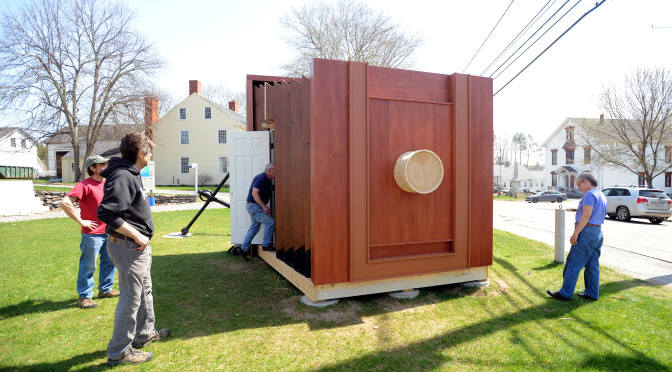
People check out the giant camera obsura constructed on at the Penobscot Marine Museum in Searsport. When the camera is complete, several people will be able to go inside to experience how the image is projected inside real-life cameras. Gabor Degre | BDN
Photos and Text by Gabor Degre of The Bangor Daily News
Did you ever wonder how cameras work? With the marvel of digital equipment, it seems almost like magic. You push a button and the image appears instantly. Photo archivists with the Penobscot Marine MuseumKevin Johnson and Matt Wheeler came up with the idea of having a very large camera obscura built, allowing people to walk inside to experience first hand how the image is created and the basic concept of how cameras work.

Kevin Johnson (right) and Matt Wheeler photo archivists at the Penobscot Marine Museum pose for a portrait with a giant camera obsura that is constructed on the lawn of the Penobscot Marine Museum in Searsport. Gabor Degre | BDN
The first written record about viewing an image like that dates back roughly 2,400 years in China. Later, Aristotle wrote about the use of the principal of the camera obscura , while observing a partial solar eclipse. In the 13th century Leonardo da Vinci gave a detailed description, and using a pinhole camera, in the mid-1820’s Joseph Niepce, a French inventor, captured the first known photograph on bitumen-coated metal plate.
You might be surprised that the principal of the camera remains the same today. With the advancement of technology, pinholes were replaced by lenses made of very high quality glass, to project a tack-sharp image. The recording of that image also went through several changes and now a computer captures the image with the aid of sensors, that replaced the light sensitive materials.
Read the full story at the Bangor Daily News.
